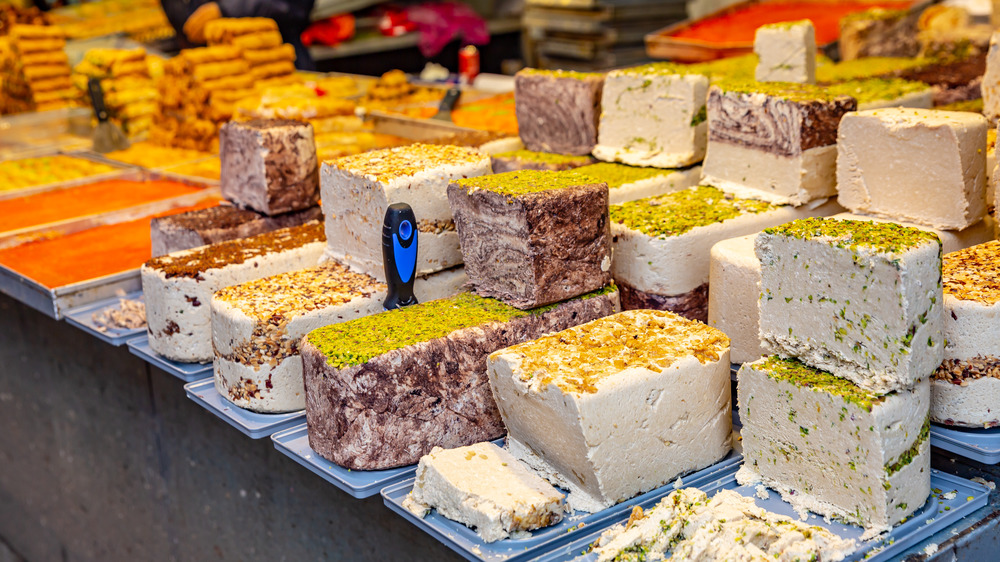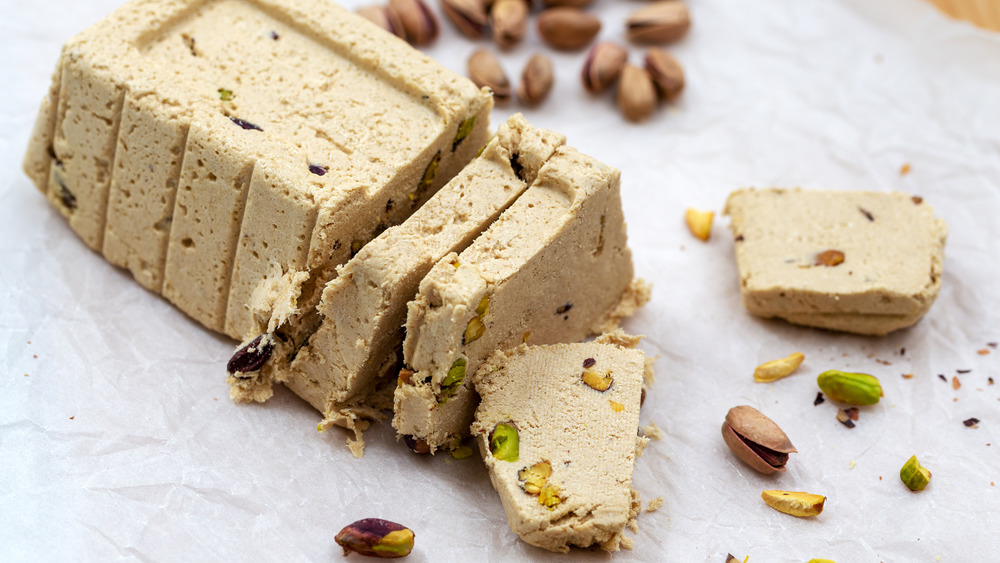Why Halva Might Be The Most Culturally Diverse Candy In The World
Some foods seem to have deep roots to several modern-day countries, and halva is definitely one of them. But instead of spanning a few current countries, halva actually has ancient ties that span continents making it one of the most culturally diverse candies in the world. What we now know to be a fudge-like candy made with tahini or sunflower seed butter has a long history with many evolutions (via Halvamania).
Halva can be traced back to the 7th century as an Arabic invention. Its original name was "hulw" which means "sweet" in Arabic. This early version of the sweet was made from dates and milk, though semolina, fruit, honey, nuts, and rose water were later added. Then, with every new culture the confection spread to, new ingredients were introduced into the mix. When "hulw" reached India, the name changed to "halva" and more varieties were made with ingredients like ghee, spices, seeds, coconut milk, eggs, and more. South Asian versions usually added pistachios (via eHow). However, the Egyptians also used pistachios, almonds, or pine nuts in their "halawa" (via Moment Magazine).
Other evidence of halva across continents
Middle Eastern influences included nuts, dried fruit, yogurt, honey, and spices in halva. But Moment Magazine explains that it was the Ottoman Turks who helped spread the sweet to Europe. There, halva was made with sesame oil, crushed sesame seeds, honey, and sugar, which most clearly resembles one version of halva that is still made and served today. In fact, Suleiman the Magnificent who ruled from 1520 to 1566, the longest-ruling Ottoman sultan, was a huge proponent for halva. He even had a kitchen built next to his palace called the "helvahane," or "house of halva" (via Moment Magazine)
Inside the "house of halva," more than 30 different kinds of the confection were made. One of those versions of the sweet was made with sesame tahini, which was the kind passed from Ottoman-ruled Romanians on to Europe. This take on halva spread through the continent by Ashkenazi Jews and eventually crossed the Atlanta to the U.S. in the early 20th century (via Moment Magazine).
Though the first known recorded halva recipe (which included seven versions) surfaced from Moorish Spain in an early 13th century Arabic cookbook, Kitab al-Tabikh or The Book of Dishes, halva has a much longer and richer history than that, says Moment Magazine. This ancient candy has survived hundreds of years and is celebrated in many cultures. So, it's only fair to believe it could be the most culturally-diverse confection in the world.

